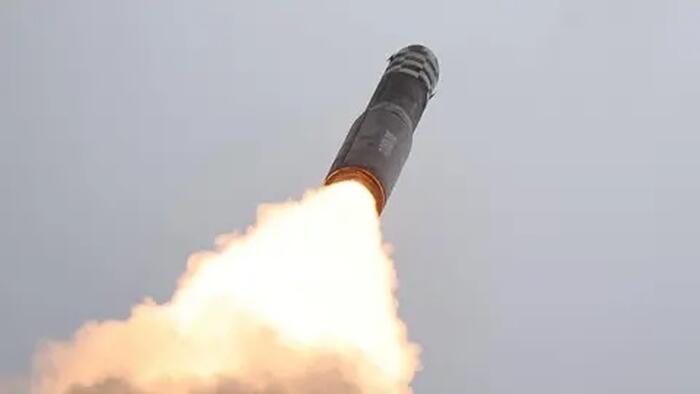North Korea has returned to the global spotlight amidst escalating geopolitical tensions, particularly concerning its military activities and the implications for regional and global security. Recently, accusations have emerged suggesting that North Korea has sent approximately 10,000 troops to Russia to prepare for possible deployment in the ongoing conflict in Ukraine. This development is particularly alarming given the historical context of North Korea’s nuclear ambitions and its long-range military capabilities. In conjunction with these allegations, North Korea conducted a significant test of an intercontinental ballistic missile (ICBM), marking its first such test in nearly a year. This launch, described as the longest flight time achieved by one of North Korea’s rockets, underscores the country’s continued commitment to its nuclear strategy.
The ICBM in question has the potential to strike targets thousands of miles away, including the continental United States. Such timing—coinciding with the critical lead-up to the US presidential election—has not gone unnoticed, as it is likely intended to amplify North Korea’s negotiating position on the world stage. According to South Korean military officials, the missile was launched from a site near the North Korean capital and traveled over 600 miles into the sea, displaying advanced capabilities. These developments come amid growing concerns about the potential for North Korean military engagement in Ukraine, which could further destabilize an already fraught international climate.
North Korean leader Kim Jong Un has publicly reiterated his commitment to bolstering the country’s nuclear forces, signaling that there will be no deviation from this trajectory despite increasing global pressures. South Korean military officials reported that this latest missile launch may have utilized solid propellant technology, enhancing the missile’s launch speed and operational stealth. The use of a 12-axle mobile launch platform, revealed in previous displays of military power, further illustrates North Korea’s advancements in its missile technology. Analysts suggest that this test can be understood as a response to the heightened rhetoric from the US, NATO, and Ukrainian officials, particularly remarks indicating possible reprisals for North Korean military assistance to Russia.
The United States has expressed serious concerns regarding the implications of North Korean troop involvement in Ukraine, warning that these soldiers could return “home in body bags.” The ongoing commitment of the United States to South Korea’s defense is also being reaffirmed through renewed large-scale military exercises and preparations aimed at enhancing joint capabilities. US Secretary of Defense Lloyd Austin emphasized America’s “ironclad” extended deterrence commitment, indicating that the US will continue to support South Korea amidst rising tensions. This partnership includes bolstering military readiness in face of perceived threats from North Korea.
Despite the strategic military exercises from the US and South Korea, North Korea has continuously cited these drills as justification for its own nuclear arsenal expansion. The defensive pact between North Korea and Russia appears to deepen military ties, allowing North Korea to potentially justify its military actions through its alliance with Moscow. This relationship is underscored by the legal frameworks established during recent engagements, further solidifying their cooperation in defense matters. The compounding pressures of military posturing from North Korea, the ongoing conflict in Ukraine, and evolving US-South Korea relations paint a complex picture of regional security dynamics that could have lasting effects on stability in Northeast Asia and beyond.
As these developments unfold, the potential for miscalculations and escalatory actions between nuclear-armed states raises significant global security concerns. The interwoven nature of North Korea’s military ambitions, its potential engagement in foreign conflicts, and the historical tensions with the US and its allies necessitate a careful re-evaluation of diplomatic strategies. International stakeholders are left grappling with the challenges of deterrence, alliance commitments, and the broader implications of North Korea’s evolving military posture that threatens to further complicate an already volatile geopolitical landscape. The world watches closely as the situation develops, underscoring the critical importance of maintaining open lines of communication and striving for diplomatic resolutions in the face of escalating tensions.

